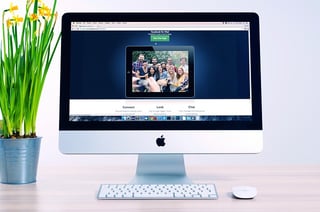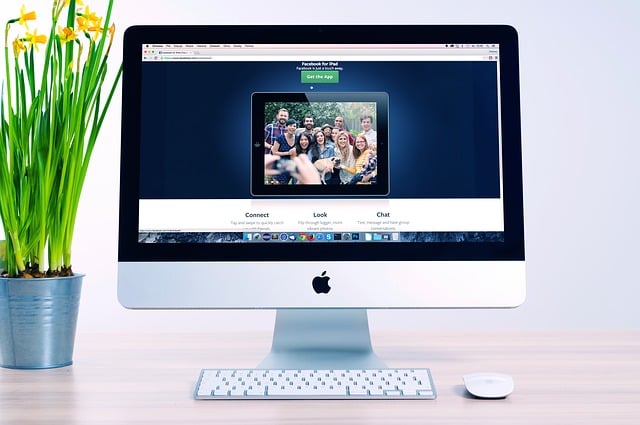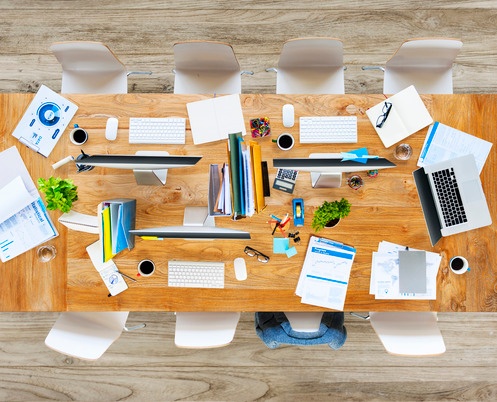Many of us start our business from the glamorous setting of our kitchen table or our couch. And hey—we’re all about bootstrapping to put every possible dollar back into your business!
At some point, though, you’re probably going to grow into a formal office, whether that’s simply your converted garage or a real, rented commercial space. When you do make that move, paying just a little extra attention to detail in the design process can yield hundreds of hours of added productivity down the road.
So do you really need that fancy ergonomic chair? Will you wither away without access to natural light? We’ve delved into the research to find out which aspects of your office space matter most for maximizing productivity.
But First, A Story…
To illustrate just how much of an impact your workspace actually makes, we wanted to share an experience of our own.
Years ago Ignite Spot worked with a client we’d travel to Nevada to audit every year. They had limited space, so what did they do? They put us up in the attic to work.
And no, this was not some cool converted attic space like the ones in 90’s TV sitcoms. It was dark. It was dusty. We were hunched over tiny work tables feeling like giant ogres.
It was miserable! And how productive do you think we were?
Let’s just say the job got done, but not without a whole lot of wasted time grumbling and being distracted by how uncomfortable it was.
The point of this story? No matter what science says, our actual experience lets us know that workplace design matters a lot, and it’s worth paying attention to.
Now, onto the research…
Work Around Windows

Let’s start with this one, because it’s a biggie. Multiple studies have confirmed that windows make for an optimum work environment—but not just because of the natural light.
A study by Herman Miller found that window-proximity weighs heavily on an employee’s overall satisfaction, which has a lot to do with their success at work. 80% of workers who were situated near windows reported being satisfied with their work environment, compared to just 55% who were farther from the good view.
And, as you might imagine, the light has a lot to do with it as well (in fact, it’s a little scary just how important it is!).
According to research from the Interdepartmental Neuroscience program at Northwestern University in Chicago, workers who were exposed to daylight during their workday got better sleep at night and experienced a higher overall quality of life than those who worked in a windowless space.
If there’s absolutely no way to work windows into your office space, at least have a policy that allows your team to take breaks and step outside for more than just a couple minutes during the day.
Clear Your Clutter
There have been lots of trending articles in recent years tying a messy desk to increased creativity. And to be sure, creativity in the workplace is important.
But on the other side of the coin, science also supports the old adage that an organized desk equates to an organized mind, which is what you need for maximum productivity.
Our solution for finding balance? Mess up your desk as much as you want during the workday, but give yourself plenty of places to catch all your crap before you turn the lights out for the night. That way, you’ll start the following day with a blank canvas, an uncluttered space that sets you off to a productive start.
You don’t have to be a neat freak to keep a tidy workspace. Here are some ideas for easy, clutter-reducing office additions:
- A desktop tray for “in progress” items, like invoices, forms to be signed and your grocery list
- A handy drawer to sweep workday essentials into: pens, markers, highlighters, paperclips, etc.
- A filing cabinet for everything that doesn’t need to be close at hand
- A basket or bin for newspapers and magazines
- A corkboard for tacking up important reminders and post-its
When everything is in its place, walking into your workspace physically feels a lot less overwhelming first thing in the morning.
Keep It Flexible

One of the best things about being your own boss is the power to choose. Choosing to work from home or from a coffee shop. Choosing to play background music or keep it silent. Choosing your chair, your desk and your computer.
While it may not be possible to give your employees all of these choices, there’s a great productivity benefit to be had from providing some level of flexibility in their workspace.
In a survey by office furniture retailer Steelcase, respondents who said they were “highly satisfied” with their work environments cited the ability to choose where to work based on their tasks as one of the biggest reasons for their satisfaction.
You can facilitate flexibility by offering both private spaces, like offices and individual desks, and public spaces, like conference rooms and collaborative work stations, for employees to move between. You can change up the seating options, varying between traditional desk chairs and more comfy options like couches.
Finally, if possible, allow workers to choose their technology based on what they feel most comfortable using: PC versus Mac, desktop versus laptop, and so on. It only makes sense that an employee who’s used to working in Windows might suffer lost productivity if forced to work on a Mac, and vice versa.
Make Snacking Less Distracting
Hunger is one of the biggest workplace distractions, especially if you have a home office. How many times have you gotten up for a “quick snack” and wound up putting away laundry, taking the dog for a walk or wandering aimlessly around the house?
Snacking is essential to keep your brain fueled up, so make it simple by designing your workspace so munchies and drinks are close at hand and less of a distracting decision (hmm…what do I want for lunch today?).
Keep a box of granola bars in your bottom drawer. Store your lunch in an insulated lunch box near your desk instead of wandering around thinking about where to grab take out. Use a one-liter water bottle instead of the standard 16 ounce one so you make fewer field trips to the fridge.
Set the Thermostat for Success
Finally, the office temperature. Keep it too warm and everyone feels sluggish and sweaty. Too cold and the discomfort becomes a distraction that can actually cause more workplace errors.
Researchers at the Helsinki University of Technology studied the thermostat war in depth and found what they say is the perfect number for productivity: 72 degrees. Whatever you do, they say, don’t let it drop below 68 or climb above 76.
Want more productivity hacking tips for entrepreneurs? Subscribe to our blog and never miss a post!













.png)


